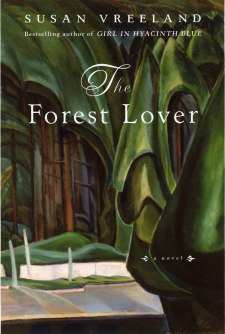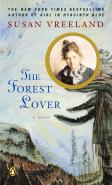










Discussion Questions for
The Forest Lover
Book club discussion leaders are encouraged to look at the Teacher's Guide for additional discussion topics as well as Penguin's Reading Group Guide.
1. Emily is a complexity of contraries. Is she resilient or easily defeated? Loving or unloving? Rash or thoughtful? Intolerant or compassionate? Frigid or passionate? Prideful or humble? What conditions or situations bring out each of these qualities in her?
2. One of Carr's teachers in France, Harry Phelan Gibb, tells Emily that she needs to paint out of her soul. What might this mean, and does she ever achieve it? What does she have to do first? Is there a connection between intuitive painting coming from one's soul or instincts, and technical painting coming from the application of aesthetic principles? Are they entirely contrary or can they be reconciled? If so, how? How does this dichotomy of artistic approaches apply to other arts?
3. Emily asks Fanny, "Don't you think creating yourself is a spiritual act?" How would she answer this for herself? How does her life answer it? Do you agree or disagree with her?
4. What is the nature of the relationship between Emily and Fanny?
5. Besides Post-Impressionist and Fauve techniques, what does Emily gain from her sixteen months in France--in terms of her art, and other than her art?
6. What influence does Dzunukwa have over Emily? How is Dzunukwa a part of Native Canadian mentality, as well as the settler mentality of European Canadians?
7. What might be the long-term effects of Emily participating in the potlatch?
8. To what extent did Emily overcome the trauma of her father's "brutal telling?" What experiences helped her to free herself from her father's rigid hold on her? Was the outcome between Emily and Claude unfortunate, or just right?
9. What propels Emily toward relationships with people who are socially marginalized?
10. After returning from Hitats'uu, Emily is concerned about the influence of her visit on Lulu who is so curious and impressionable. Why doesn't she show a similar concern about her influence on Harold? She tells her sisters of the good effect Harold has had on her return to serious work. Is Emily's influence on Harold ultimately good or bad?
11. What similarities are there between Harold and Sophie? In what ways are Harold and Sophie both tragic figures resulting from similar causes?
12. How realistic is Emily in her expectations of what a sister should be? What brings about some degree of healing in the relationship between Emily and her sisters? What prevents it from being complete?
13. In Chapter Twenty-nine, Emily reads a passage from Whitman's Leaves of Grass to Jessica which begins, "The masters know the earth's words and use them more than audible words." How does Emily absorb this and apply it?
14. The first native philosophy that Emily encounters is the Nuu'chah'nulth belief of hishuk ts'awaak, everything is one, voiced by Lulu. To what extent does Emily come to see this to be true?
15. What are all the implications of the title?
16. Ultimately, what is Emily's spirit song? What might be the words or refrain of it? What might have been the words to Sophie's?
17. If you happen to know the work of Georgia O'Keeffe, what similarities do you see in the themes of both of their work and the sensibilities of the two women? They did actually meet each other briefly in New York in 1930. What kind of a conversation might they have had?
18. After visiting museums in New York in 1930, Emily told an audience in Victoria that abstraction was art in which "only the spiritual remains." Given her search for a spiritual way of seeing, why do you think she didn't turn wholly to abstraction in her paintings?
19. How do Emily's struggles for her art parallel or differ from those of other creative individuals, famous or not?
20. Given that Emily Carr is well known throughout Canada, what do you think has prevented her from becoming well known in the United States?
21. How have you observed things differently after having lived Emily's experience vicariously?
susan@svreeland.com